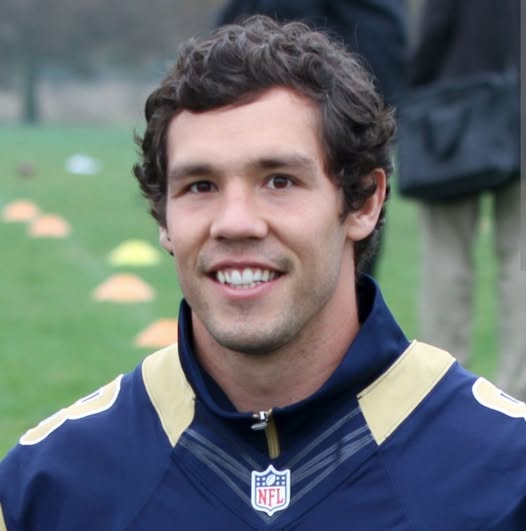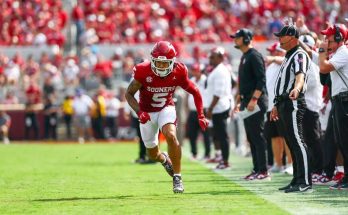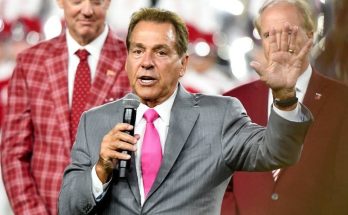In a move that has sent ripples of excitement and pride through the Sooner Nation, the University of Oklahoma has announced plans to erect a statue in honor of Sam Bradford, one of the most influential quarterbacks in the program’s history. This monumental gesture will commemorate Bradford’s unparalleled impact on Oklahoma football, both in his time as a player and beyond, as he left a lasting legacy that continues to influence the franchise’s culture and success.
Bradford’s journey from a highly touted recruit to the winner of the prestigious Heisman Trophy in 2008 is a story that transcends the sports world. His commitment to Oklahoma was one of the first significant moments that set the tone for the Sooners’ dominance in the 2000s and early 2010s. After arriving in Norman, Oklahoma, Bradford quickly emerged as a star, captivating fans with his poise in the pocket and his uncanny ability to orchestrate fast-paced, high-scoring offenses under then-head coach Bob Stoops. However, his contributions go far beyond just his on-field statistics and accomplishments; they have become woven into the very fabric of the program’s identity.
The announcement of a statue is not just an acknowledgment of Bradford’s individual greatness but also a recognition of his instrumental role in shaping the trajectory of Oklahoma football. His leadership during his time in Norman played a key role in maintaining the Sooners’ reputation as a powerhouse in college football, and his influence is still felt to this day.
Bradford’s meteoric rise to stardom began during his sophomore season, which culminated in him winning the 2008 Heisman Trophy. His remarkable performance that season – throwing for over 4,700 yards and 50 touchdowns – cemented his place in Oklahoma’s storied history. Under his guidance, the Sooners boasted one of the most explosive offenses in college football. Bradford’s ability to read defenses, coupled with his pinpoint accuracy and a deep understanding of offensive schemes, made him a nightmare for opposing teams. His 2008 season, in which he broke several school and NCAA records, remains a benchmark for Sooners quarterbacks.
However, Bradford’s impact on Oklahoma football wasn’t just about the records or the accolades he accumulated. It was his leadership, character, and unwavering dedication to his teammates and the program that left a lasting imprint on the school and its fan base. While his Heisman season captured the national spotlight, it was his consistency and commitment to the team that set him apart. He was not only a quarterback but also a mentor, a motivator, and a symbol of what it meant to be a Sooner.
In addition to his Heisman success, Bradford led Oklahoma to two Big 12 Championships and a berth in the 2009 BCS National Championship Game, solidifying his place among the all-time greats in the college football world. Despite suffering a major injury that sidelined him for much of his junior season, Bradford’s legacy remained untarnished. He returned to the field and showed resilience, battling back from the injury to prove his worth as both a leader and a player. His decision to declare for the NFL Draft after his junior year would mark the end of an era in Oklahoma football, but the impact he had during his time in Norman would be felt for years to come.
Bradford’s influence extended beyond his playing days. His decision to enter the NFL Draft in 2010, where he was selected by the St. Louis Rams with the first overall pick, represented not only a new chapter in his career but also highlighted the strength of Oklahoma football’s brand. His transition to the professional level was seamless, and he became the face of the Rams’ franchise for years, earning the NFL Offensive Rookie of the Year award and providing a blueprint for future Sooners quarterbacks in the league. Bradford’s success in the NFL further raised the profile of Oklahoma football and solidified the program’s reputation as a pipeline to the professional ranks.
But perhaps what truly sets Bradford apart is the impact he had on the quarterbacks who followed him at Oklahoma. Players like Landry Jones, Baker Mayfield, and Kyler Murray all came after Bradford, and each of them, in their own way, built upon the foundation that Bradford helped lay. Jones, who followed Bradford as the Sooners’ starting quarterback, often spoke about the influence Bradford had on him during their time together, both on and off the field. Mayfield and Murray, who would go on to win Heisman Trophies of their own, frequently credited Bradford for showing them what it meant to be a leader and a professional in the highly competitive world of college football.
Bradford’s legacy also lives on through the high standards he set for the Oklahoma football program. Under his leadership, the Sooners became known for their high-flying, fast-paced offenses, a reputation that has continued in the years since. His impact on the program’s culture cannot be overstated, and his success helped propel the Sooners into the national spotlight as one of the top college football programs of the 21st century. Bradford’s time at Oklahoma is often regarded as the golden age of Sooners football, and as the years go by, the significance of his contributions only grows.
Erecting a statue in his honor is not just about remembering his individual accomplishments but also about recognizing the ways in which he helped elevate the program as a whole. The Sooners have always had a storied history, but Bradford’s time in Norman solidified their place as a perennial contender on the national stage. His legacy is now forever etched into the heart of the program, with the statue standing as a testament to the greatness that he helped create.
For the current players at Oklahoma, the statue will serve as a reminder of the high expectations that come with wearing the crimson and cream. Bradford’s success is something that future generations of Sooners will continue to aspire to, and his statue will serve as a benchmark for excellence in the years to come. It will stand not just as a tribute to one player’s achievements, but as a symbol of what it means to be a part of the Oklahoma football tradition: excellence, leadership, and a commitment to greatness.
In many ways, the statue at Gaylord Family Memorial Stadium will be a reflection of the legacy of not only Sam Bradford but also the Oklahoma football program as a whole. It is a tribute to the past, a celebration of the present, and an inspiration for the future. As the Sooner Nation prepares to celebrate this honor, the statue will undoubtedly become a focal point for fans and players alike, a place where the spirit of Sam Bradford’s legacy can live on for generations to come.
Bradford’s story is one of overcoming obstacles, seizing opportunities, and embracing leadership. It is a story that has inspired not just Oklahoma fans but college football fans across the country. By immortalizing him with a statue, the University of Oklahoma is making sure that future generations of Sooners will always remember the quarterback who helped elevate the program to new heights. And in doing so, the Sooners are reinforcing the values that Sam Bradford represented: hard work, determination, and a relentless pursuit of greatness.
As the statue takes its place outside Gaylord Family Memorial Stadium, it will not just be a tribute to one of Oklahoma’s greatest quarterbacks, but to the enduring legacy of a program that continues to shape the future of college football. It will serve as a reminder that greatness, once achieved, never fades; it is immortalized for all to see.



